Here’s our in-depth analysis of the 2023 Asus ROG Strix G17 series, a mid-tier Republic of Gamers laptop powered by AMD, now on the market.
In a year primarily dominated by Intel-based 2023 ROG models, two Strix models still embrace the cutting-edge AMD Dragon Range HX hardware platform, combined with potent Nvidia RTX graphics: the subject of our discussion, the Strix G17 G713.
The 2023 ROG Strix G17 embodies a mid-range 17-inch chassis furnished with a Ryzen 9 7945HX processor and several mid-tier RTX 4000 GPU selections. Our reviewed variant is equipped with the RTX 4070 140W configuration, representing the most robust option for this model.
This configuration impresses with its formidable CPU performance, marking itself as one of the top contenders among mid-range laptops available today. However, the 16C/32T AMD platform doesn’t consistently optimize real-world applications, and the configuration slightly skews towards a GPU imbalance, with the 4070 exhibiting a noticeable performance. This can be justified by a great price point.
Throughout this review, we’ll delve into comprehensive insights, providing you with essential information as a prospective buyer of this 2023 Strix G17 series. Our specific unit, the Strix G17 G713PI (R9 + RTX 4070 OC), stands as the flagship configuration within the 2023 ROG Strix G17 series. Accompanying variants include the Strix G17 G713PV (R9 + RTX 4060 140W OC) and the Strix G17 G713PU (R9 + RTX 4050 140W OC).
Design and Construction
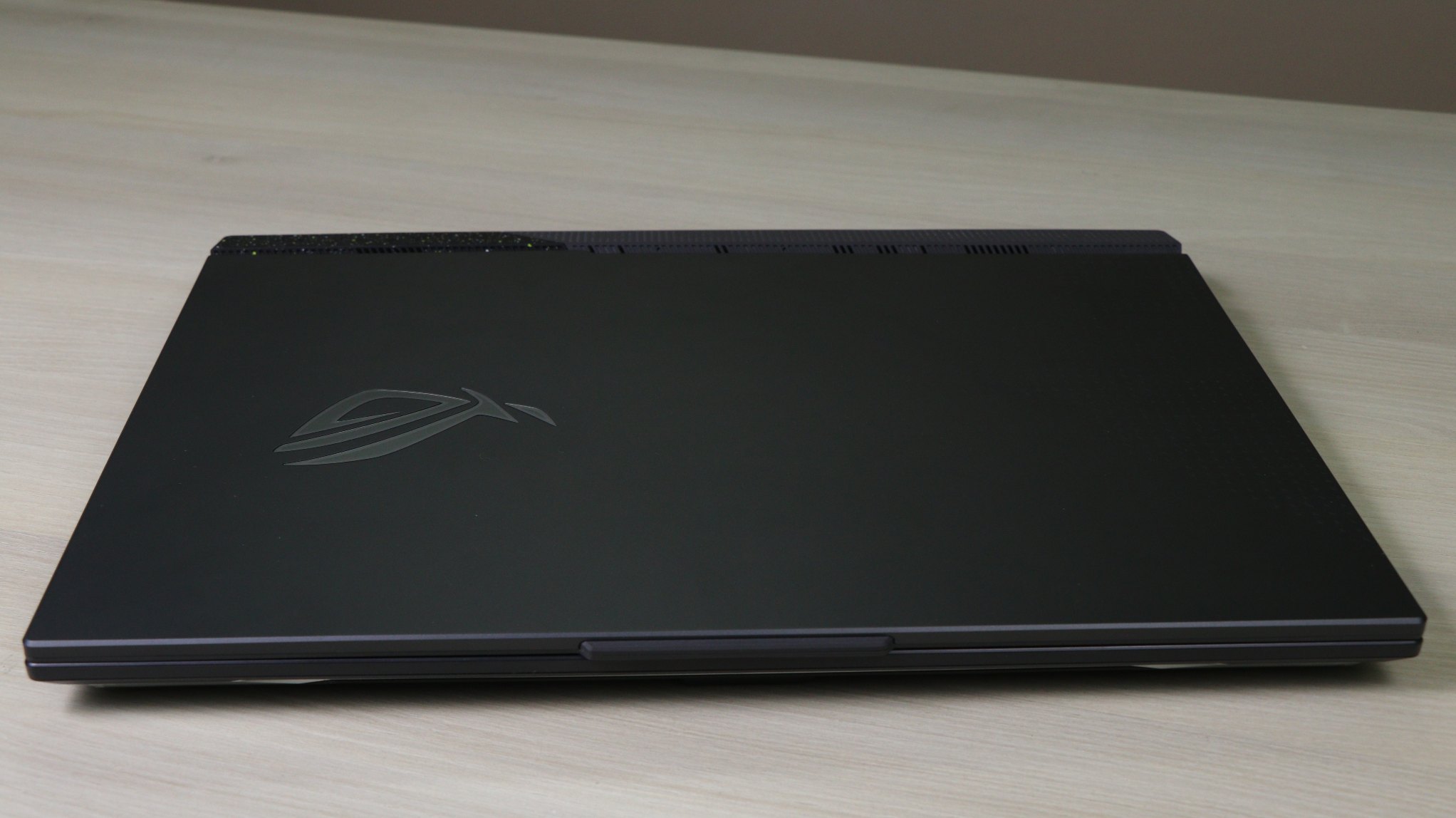
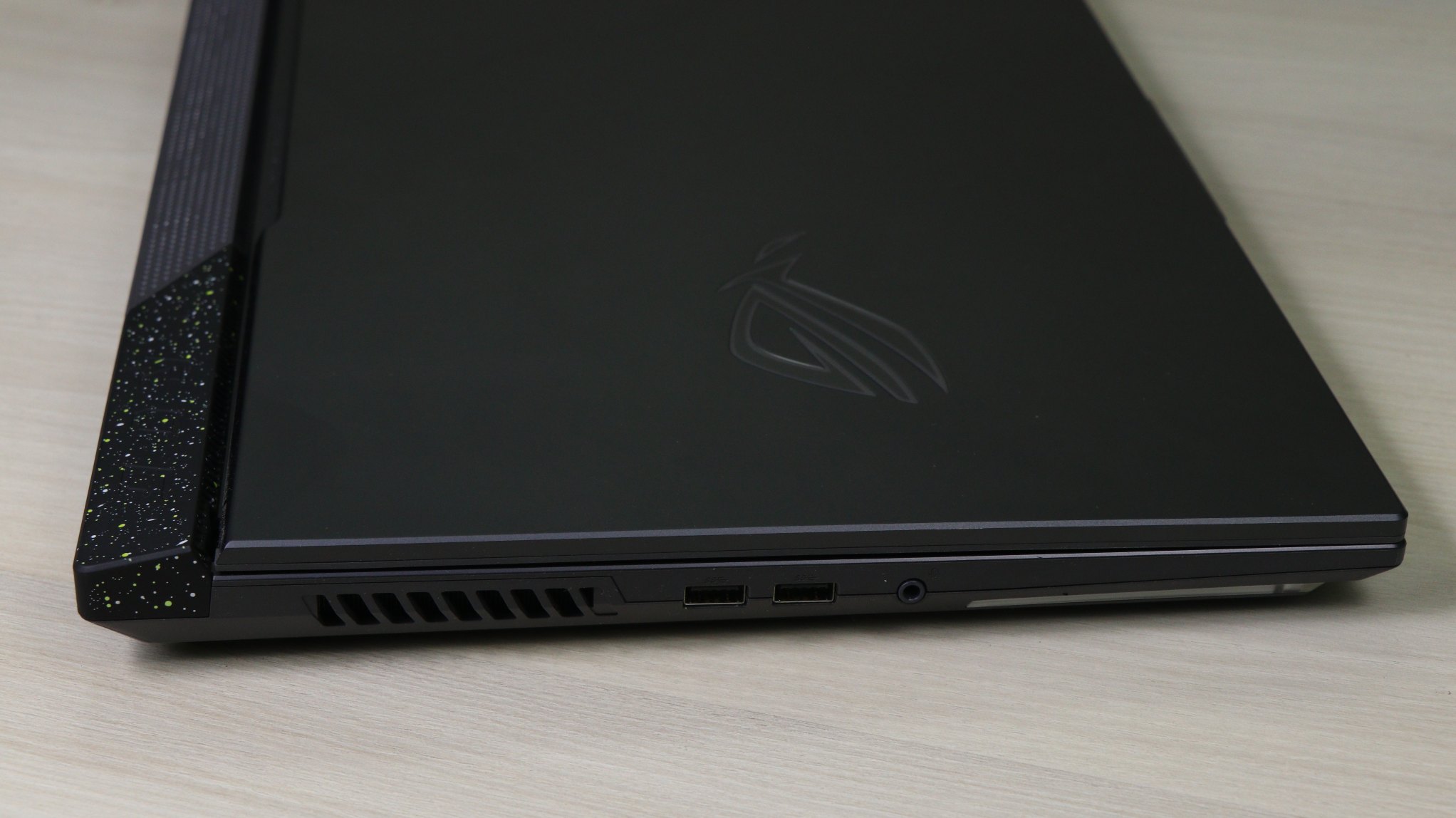
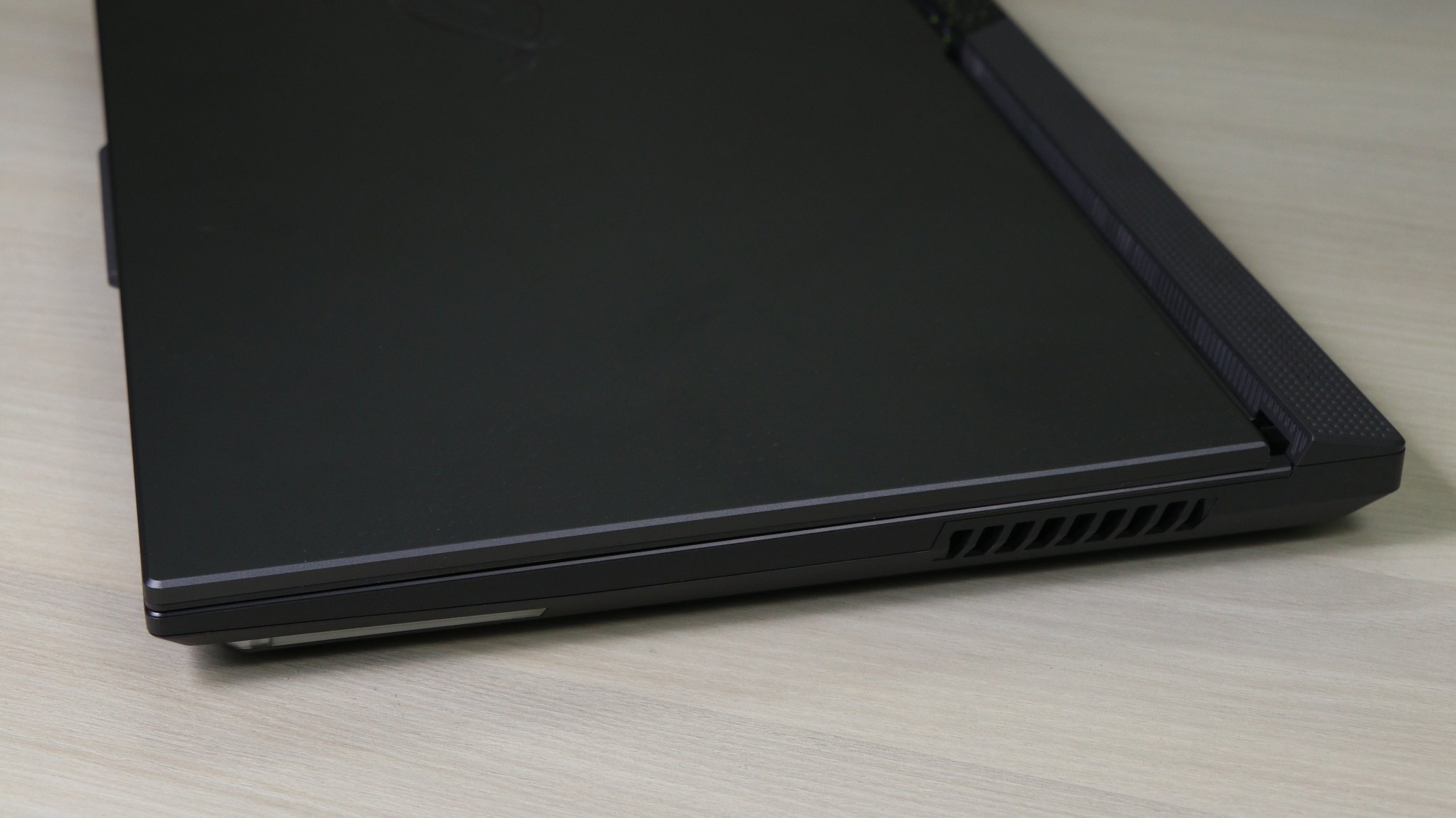
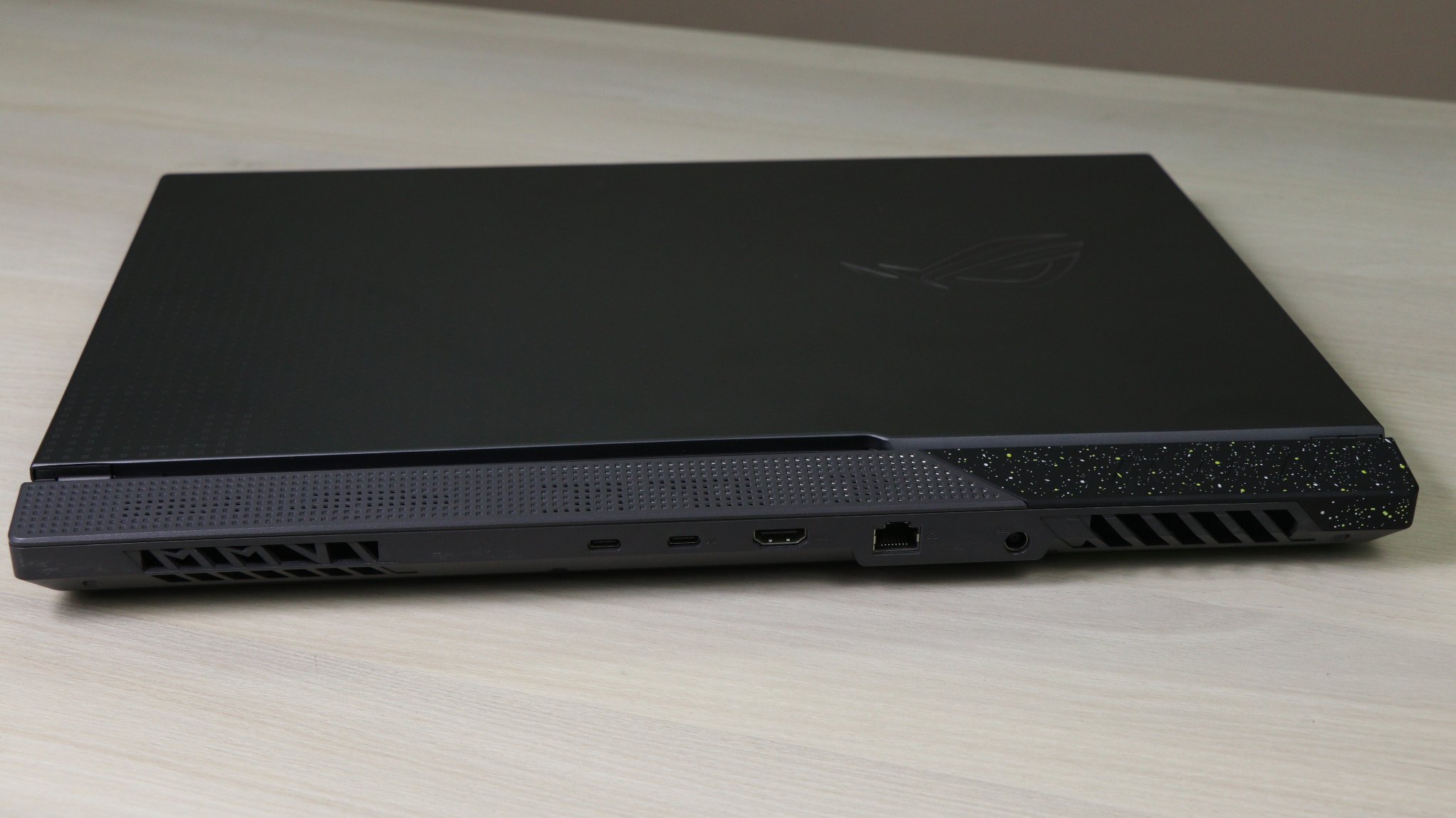
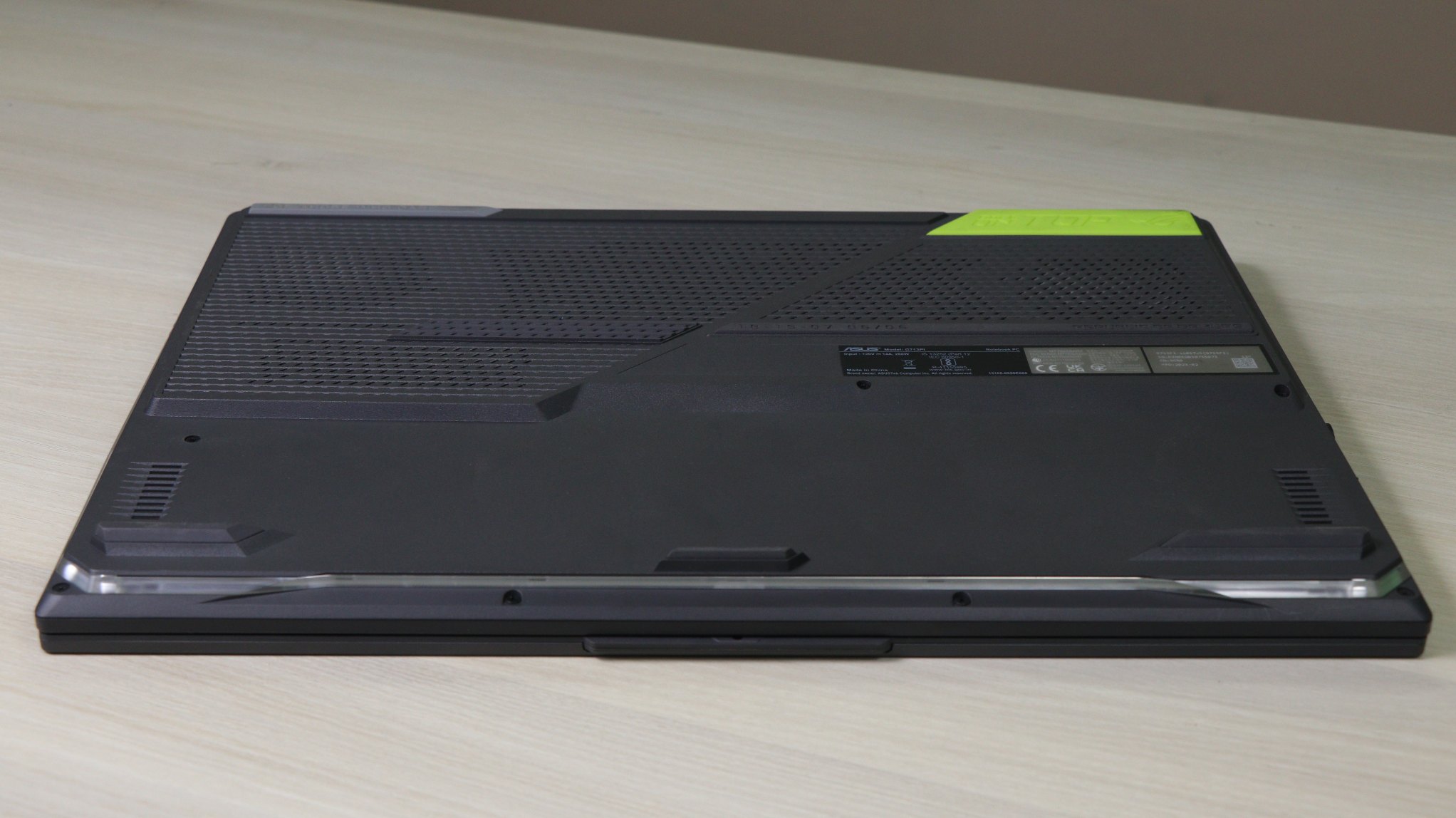
The 2023 ROG Strix G17 represents an upgraded iteration of the ROG Strix G17 chassis seen in previous mid-tier ROG Strix models. This positions it as a 17-inch full-sized laptop, falling between the 2023 Strix G16 and Strix G18 models concerning dimensions and weight. With dimensions of 400 x 280 mm and a weight of 2.77 kilograms, plus an additional 0.81 kilograms for the charger, it isn’t designed for portability.
Compared to the Scar 17 model, it’s slightly lighter due to differences in the cooling mechanism. The Scar 17 incorporates a vapor-chamber thermal module, while the Strix G17 relies on an array of heat pipes. Generally, they have a similar size, with the Strix G17 being marginally thicker. The design follows the standard ROG aesthetic, featuring a dark-grey metal lid and a dark-grey plastic interior. This color choice is better at concealing smudges and finger oils compared to the black materials used in the Scar 17, although occasional cleaning is still necessary.
In terms of aesthetics, the design is decent. However, some may prefer the Scar 17’s darker color scheme and simpler lines without the extra accents and patterns found on the Strix G17 chassis. The speckled ROG cap behind the display adds a touch of color to the otherwise monochrome appearance.
In terms of ergonomics, it’s a mix. The rubber feet keep it stable on a desk, and the hinges are smooth and sturdy. The front lips and corners are rounded for wrist comfort. However, the positioning of most of the IO on the rear is convenient, ensuring cables don’t interfere with daily use. Notably, the useless KeyStone feature from past models has been omitted from the left side. However, essential features like a card reader, a lock, and biometrics are still absent. The laptop does feature a camera at the top of the display, albeit with HD quality.
The laptop sports a 17.3-inch 16:9 display, resulting in a prominent bezel beneath the screen. An interesting detail is the cut in the bezel that allows visibility behind the laptop, displaying any cables present. Other notable aspects include the limited backward tilt of the screen (about 130 degrees), always-on status LEDs below the display in the line of sight, and an always-on light in the power key—potentially inconvenient in dimly lit environments.
Additionally, there’s RGB lighting and the ROG logo on the lid. The customizable RGB lightbar running over the front lip and around the corners is appreciated. However, the panel-lit ROG logo on the lid is a matter of personal preference; unlike the non-lit logo on previous ROG Strix models, it cannot be controlled or switched off when needed.
Keyboard and Trackpad
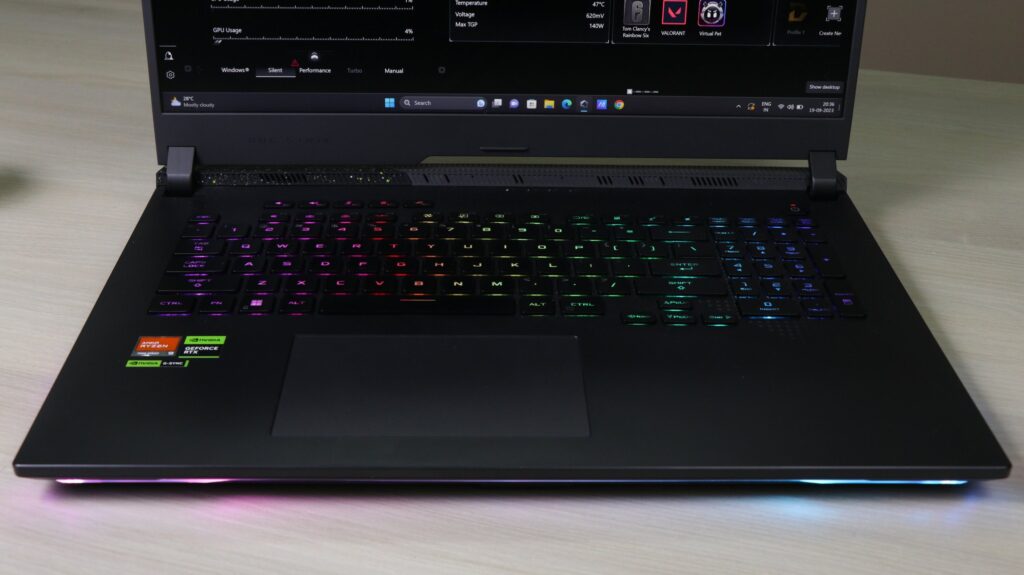
The keyboard and touchpad on the 2023 ROG Strix G17 closely resemble those found in the 2022 ROG Strix models and the 2023 ROG Scar 17, featuring a rubber-dome ROG layout and per-key RGB lighting.
In terms of layout, it adheres to the typical 17-inch ROG laptop standards, with main keys of appropriate size and spacing, a slightly compact NumPad section, and additional media keys located at the upper left. The arrow keys are somewhat smaller in this design, yet remain perfectly functional, benefitting from a slight spacing from the adjacent keys. In contrast, the 2023 Scar 16/18 models incorporate full-size arrow keys but in a more tightly packed arrangement.
In our experience, the typing sensation is satisfactory, with smoothly finished keycaps providing good feedback and accuracy.
The keys are backlit with RGB lighting, allowing for per-key customization and a range of effects through the Armory Crate app. The LED illumination is adequately bright and even, with minimal seepage from beneath the keycaps, which is not distracting.
However, a persistent issue is the lack of illumination for the F1-F12 labels on the top keys, making them challenging to identify in dimly lit environments. It would be beneficial if Asus could rectify this aspect of the keyboard design.
Regarding the touchpad, this Strix model incorporates a medium-sized glass click pad that functions effectively for swipes, gestures, and taps. The surface is smooth and accurate, although the physical clicks can feel cumbersome, and firmer taps may cause some rattling. It’s advisable to tap gently.
In terms of biometrics, the 2023 ROG Strix G17 series continues to lack any such features.
Screen
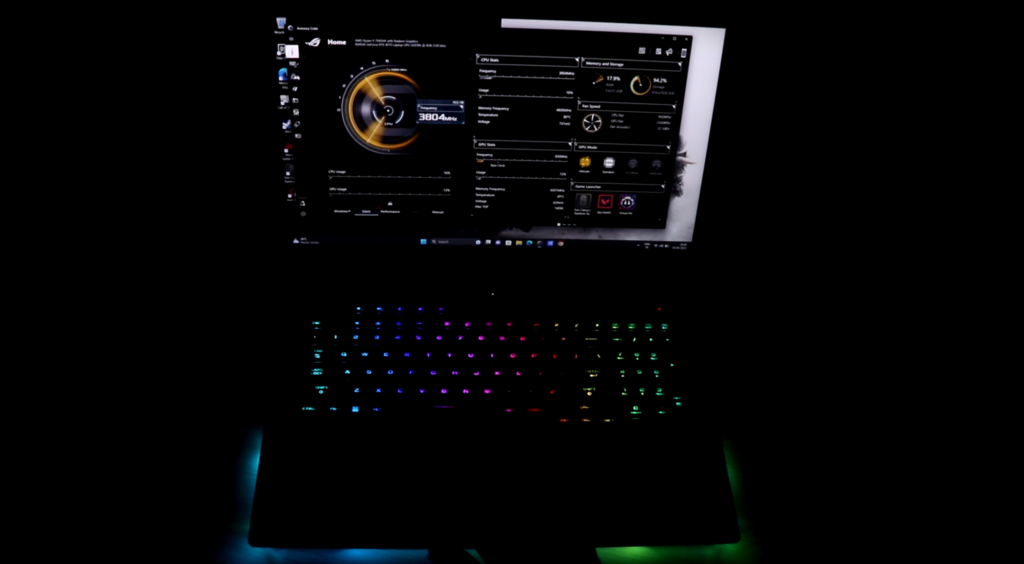
As previously mentioned, the 2023 ROG Strix G17 features a 17.3-inch 16:9 display with a matte non-touch surface. Primarily, this laptop offers a QHD panel, although there could be lower-tier configurations equipped with FHD panels.
The QHD display is a satisfactory mid-tier choice, boasting well-balanced specifications and vibrant colors. However, its brightness is relatively modest, reaching only around 350 nits, and it doesn’t excel in delivering deep blacks and high contrast. Nevertheless, it stands as an excellent gaming option with a 240Hz refresh rate, rapid response times, and GSync support. Additionally, this panel was a featured choice in many of the 2022 ROG Strix G and Scar models.
Hardware and Performance
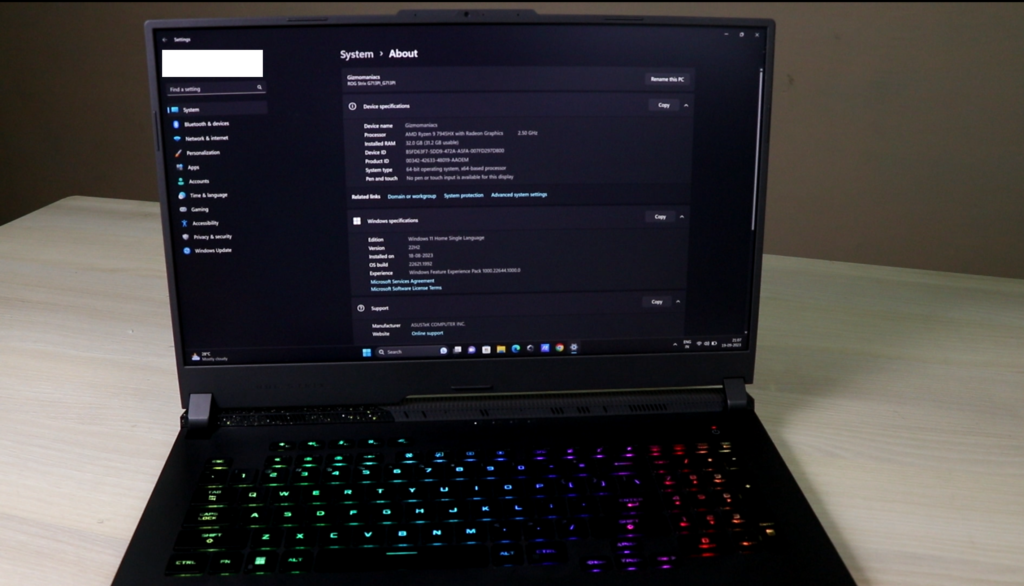
Our test variant is the highest-tier configuration of the Asus ROG Strix G17, known by its codename G713P. It is powered by an AMD Ryzen 9 7945HX processor, equipped with 32 GB of dual-channel DDR5-4800 memory, 1 TB of middling SSD storage, and dual graphics: the Nvidia RTX 4070 8GB dGPU along with the Iris UHD iGPU integrated within the Intel processor.
Before delving further, it’s important to note that our evaluation unit was provided by Asus and operates on early software available as of early April 2023 (BIOS 311, Armoury Crate 5.4.10, GeForce 531.41 drivers). Certain aspects might witness changes with subsequent software updates.
In terms of specifications, this 2023 Asus ROG Strix G17 showcases the latest AMD and Nvidia hardware available to date.
The Ryzen 9 7945HX stands as the apex mobile processor within the 2023 Ryzen 7000 Dragon Range platform. Built on a Zen4 architecture, it houses 16 cores and 32 threads. Dragon Range represents a high-performance mobile platform with full-power cores and threads, distinguishing itself from the hybrid design seen in Intel platforms of this generation. This setup translates to excellent performance in sustained loads; however, the battery efficiency doesn’t align as effectively.
Our model boasts the RTX 4070 Laptop dGPU, which can operate at up to 140W with Dynamic Boost, featuring a slightly overclocked implementation. Alternative configurations like RTX 4060 and 3050 are also available.

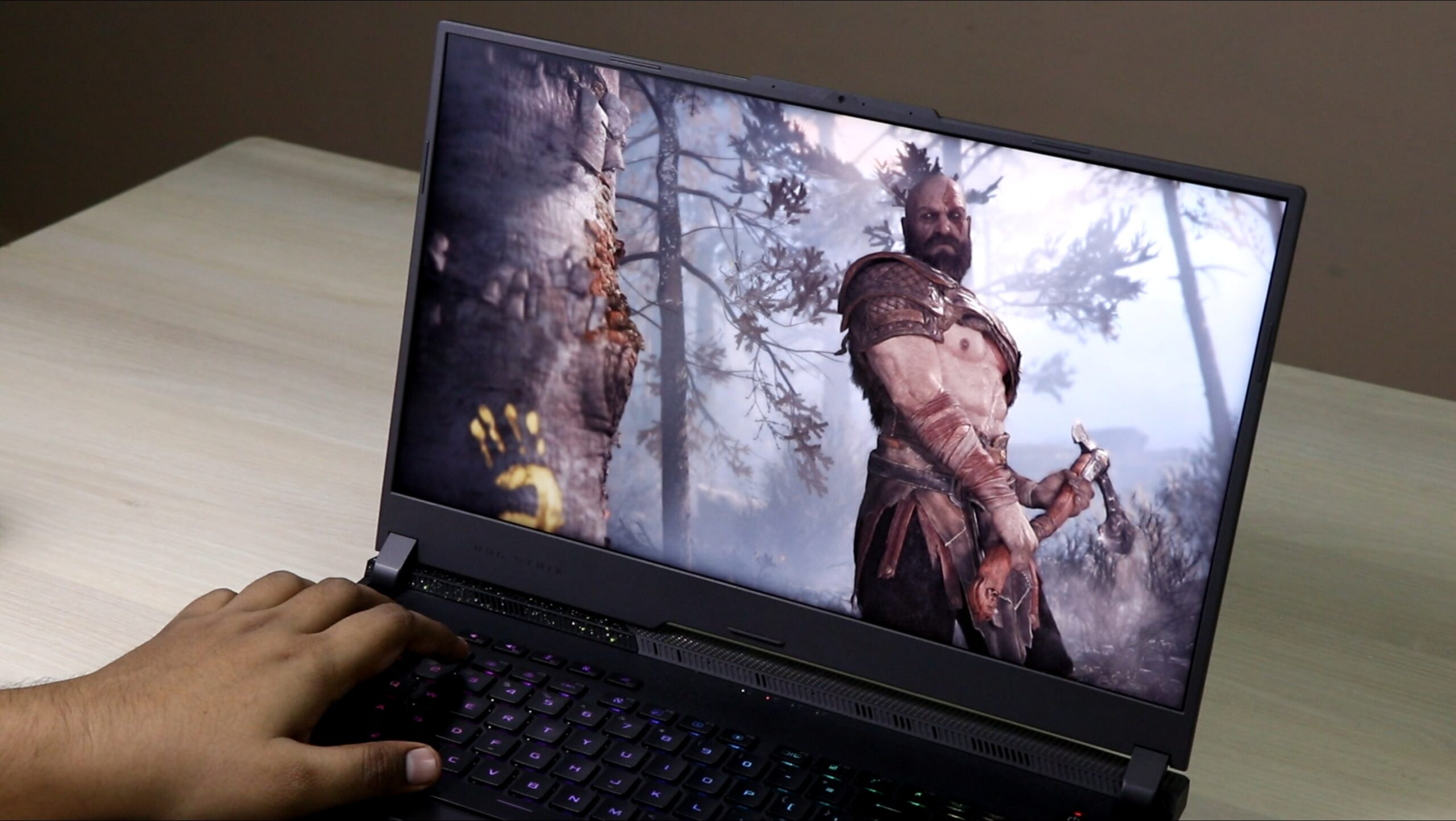
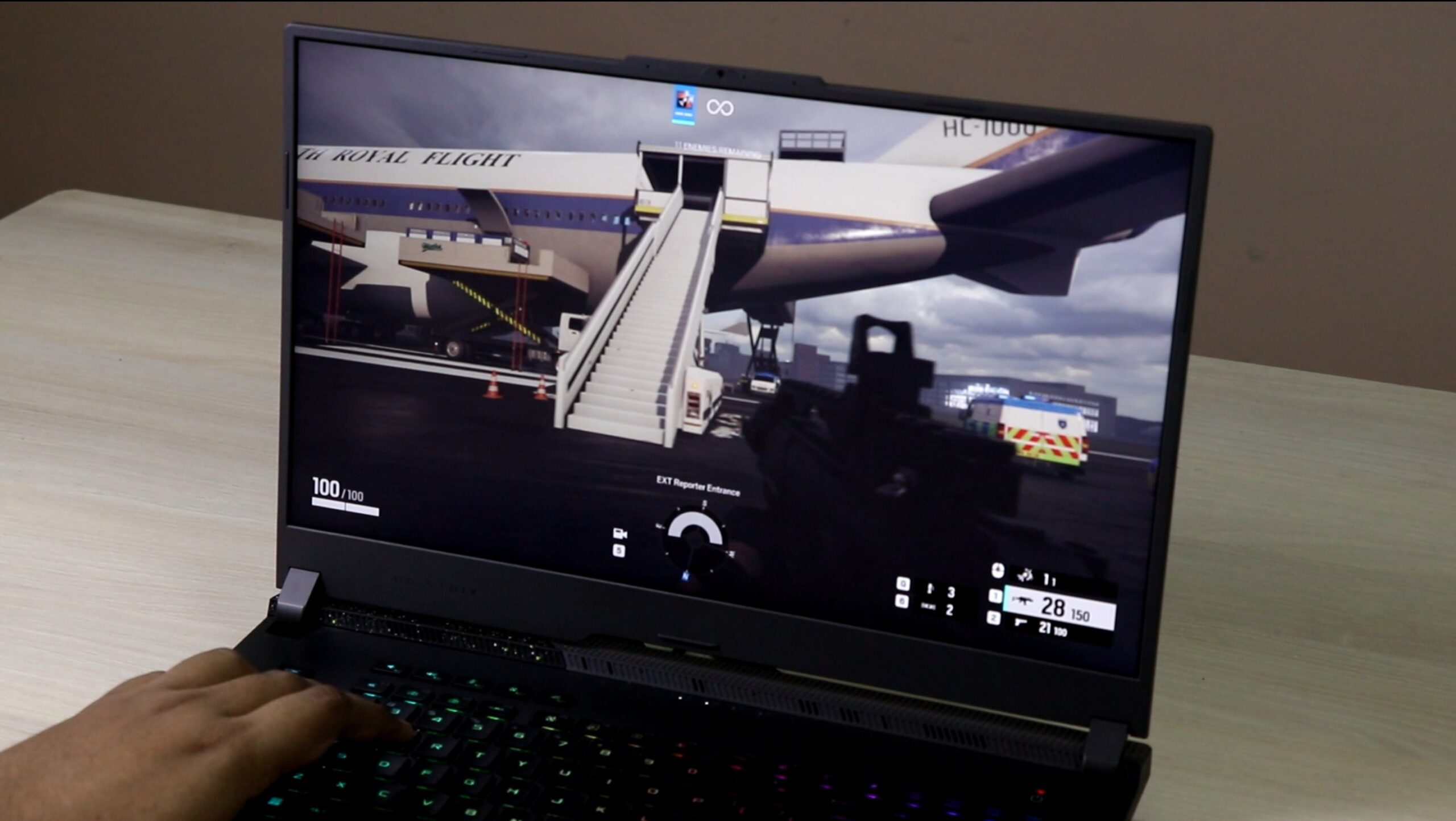
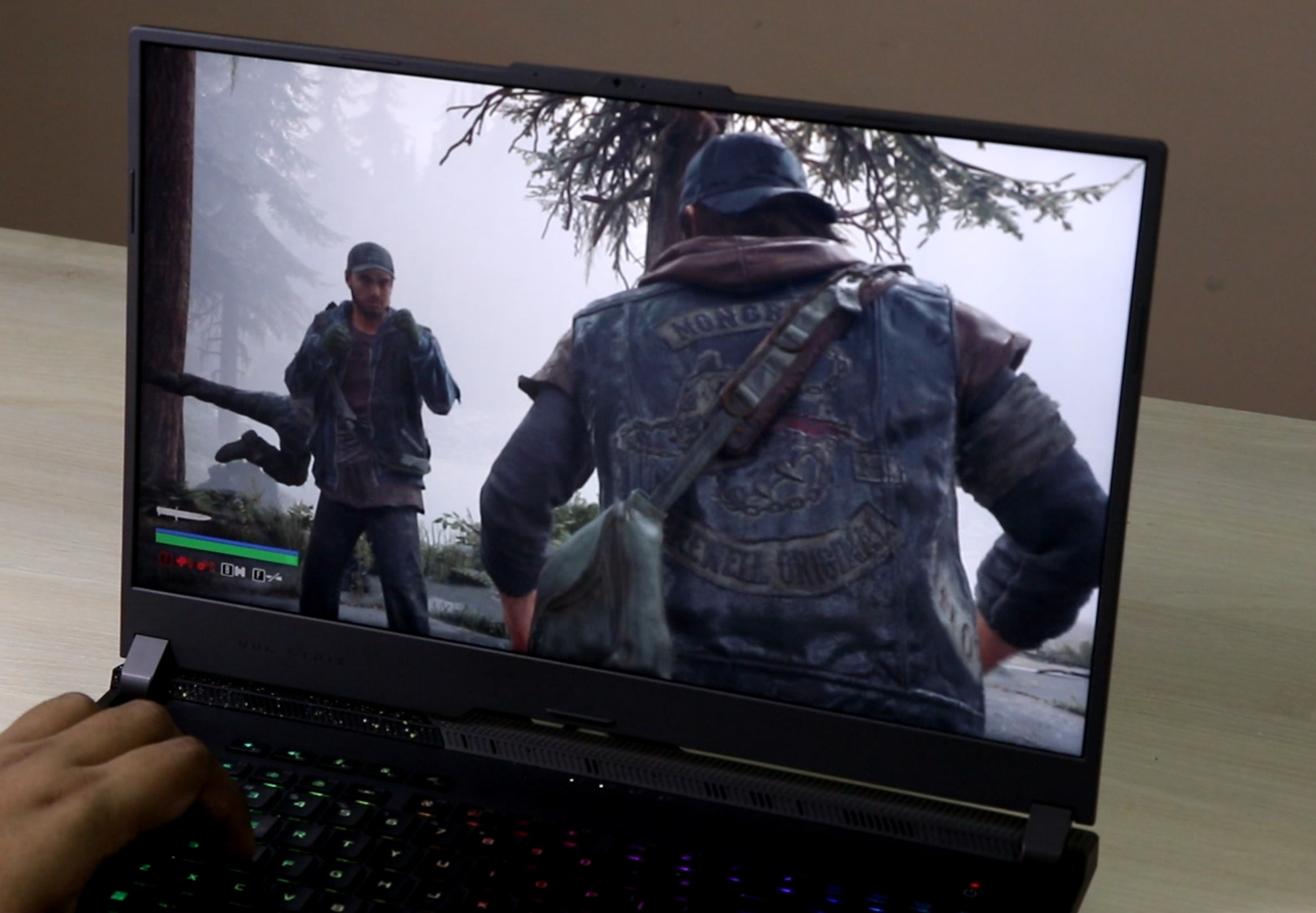
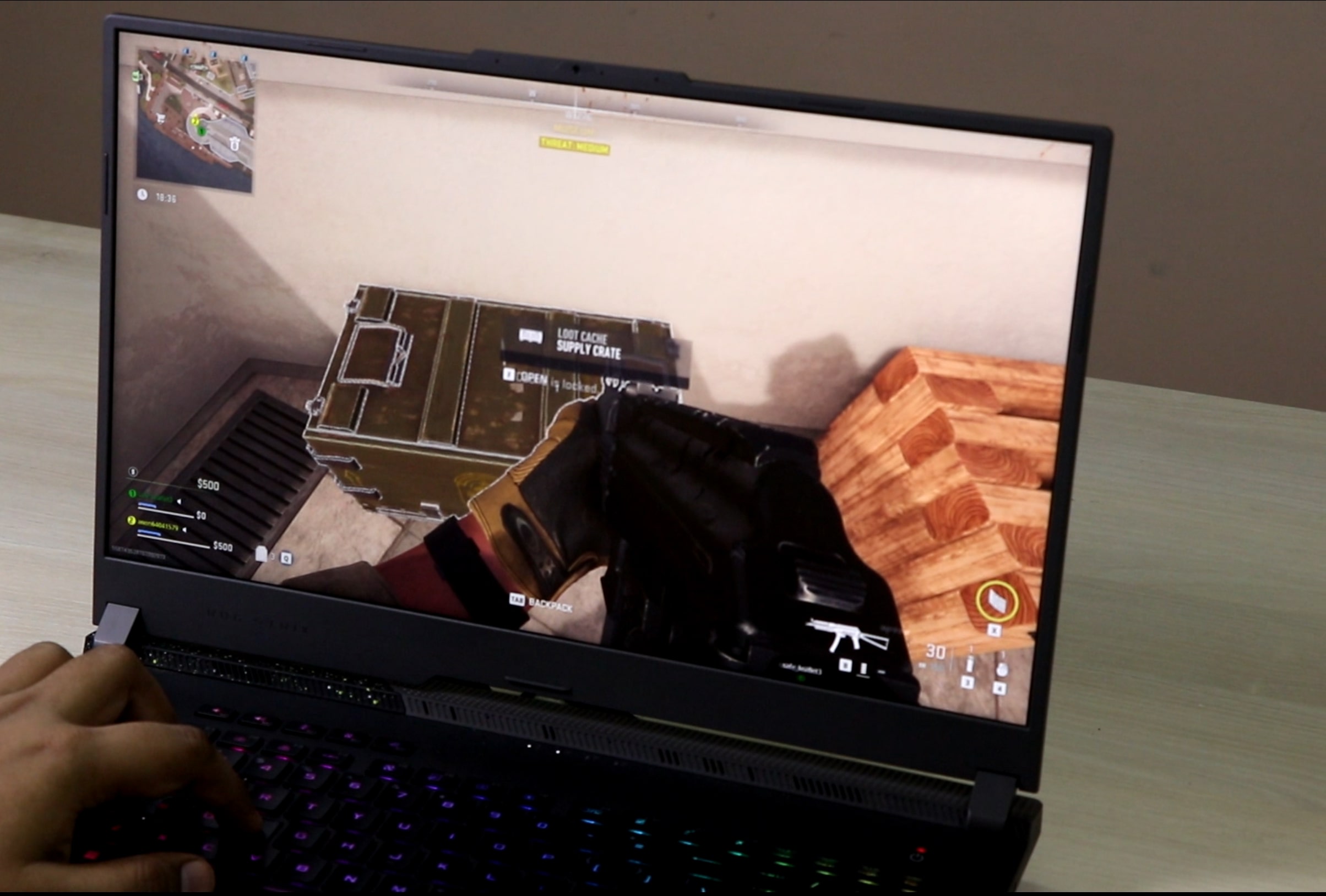
This laptop is equipped with an advanced MUX, enhancing gaming performance and supporting Nvidia’s Advanced Optimus technology and GSync on the main display. As for memory, the laptop accommodates two DIMMs and supports up to 64 GB of DDR5 memory. Our specific unit boasts a 32 GB DDR5-4800 configuration. In terms of storage, there are two M.2 2280 SSD slots, with our unit featuring a mid-tier 1 TB Micron 2400 drive, albeit slower than the Samsung PM91A driver available with the Scar 17 models.
Accessing the components involves a relatively straightforward process. Several Phillips screws secure the bottom D-panel, and there’s a pop-up screw in the right corner facilitating the removal process. It’s essential to exercise caution, as this design integrates the lightbar into the D-Panel, necessitating gentle handling to avoid damaging the ribbon connection between the motherboard and the lightbar. Inside, easy access is provided to the RAM slot, SSD slots, WiFi module, battery, speakers, and thermal module. This particular variant implements a standard thermal design with a set of heat pipes, differing from the Vapor Chamber cooling module.
Beyond specifications, Asus offers their standard power profiles in the Armoury Crate control app: Silent, Performance, Turbo, and Manual, each with distinct power settings and fan profiles. These settings are slightly more conservative, owing to the lower power consumption of the RTX 4070 chip in comparison to the 4080/4090 chips. Notably, the Performance profile operates at a slightly quieter level on this laptop, and the Manual mode tends to be louder.
Additionally, there are GPU options to choose from: Ultimate (dGPU only, requiring a restart when selected), Standard (enables Advanced Optimus), Optimized (enables regular Optimus), and Eco (regular Optimus, but disables the dGPU). For daily use and tests, the laptop was predominantly set to Standard, while Ultimate was opted for during gaming sessions.
Performance and Benchmarks
Performance and benchmarks exhibit a strong alignment with other 2023 RTX 4070 configurations (with both Intel and AMD processors) in mixed performance. In terms of CPU performance, it stands as a top performer in multi-threaded loads and remains within 10% of the performance of i9 13th-gen Core HX implementations in single-core performance. It’s worth noting that most Core HX platforms operate at higher sustained power, providing additional context for these performance metrics.
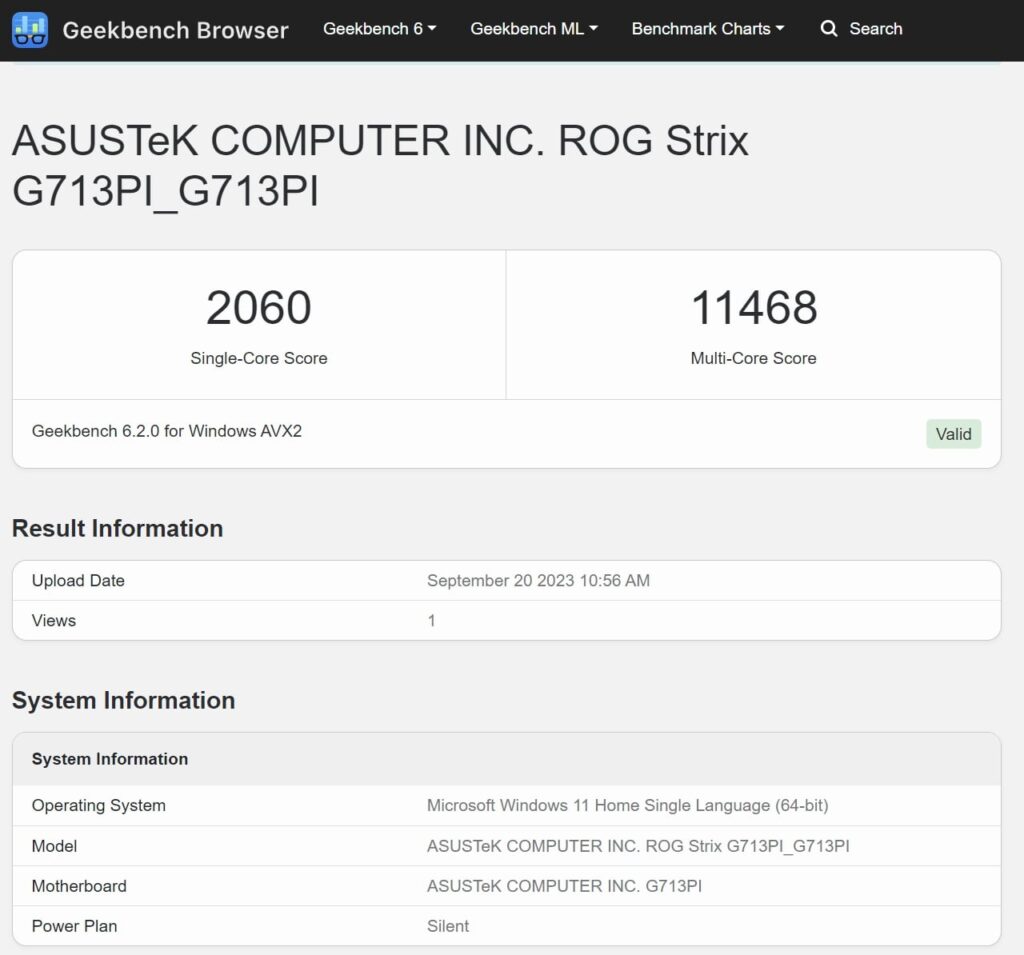
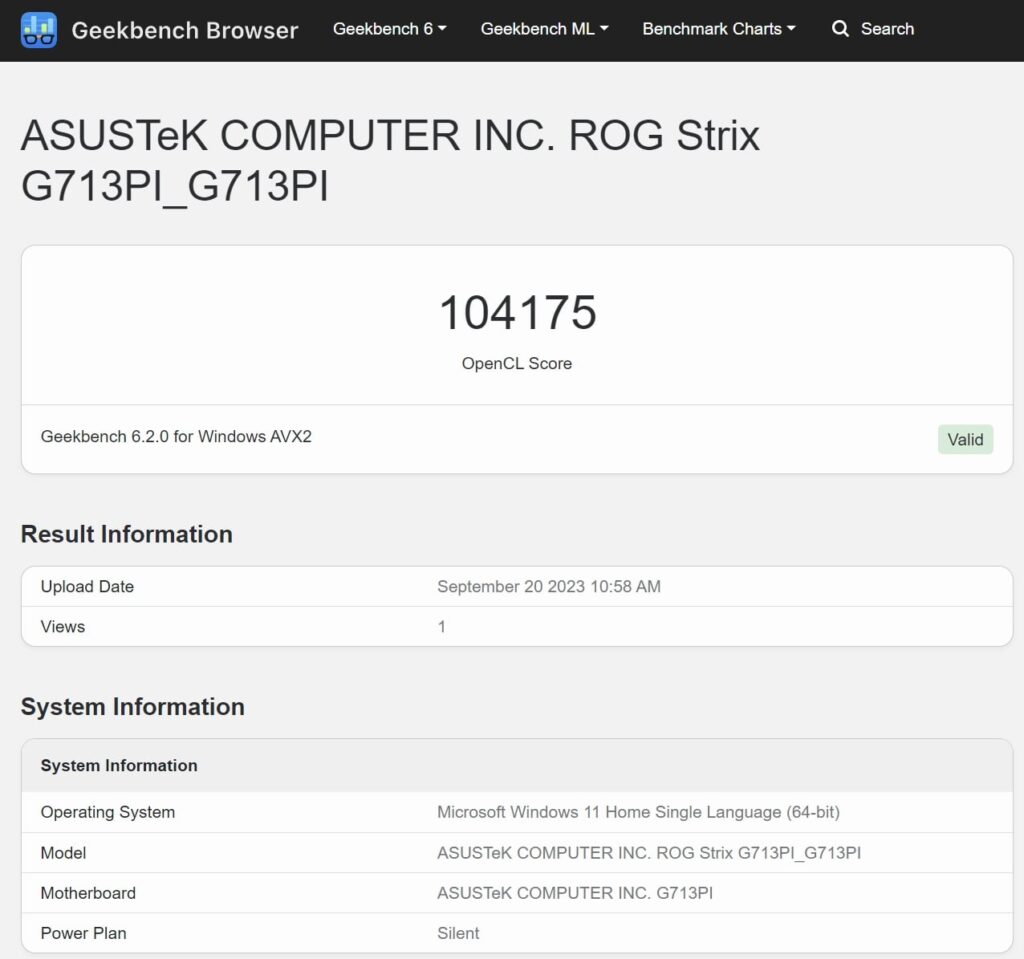
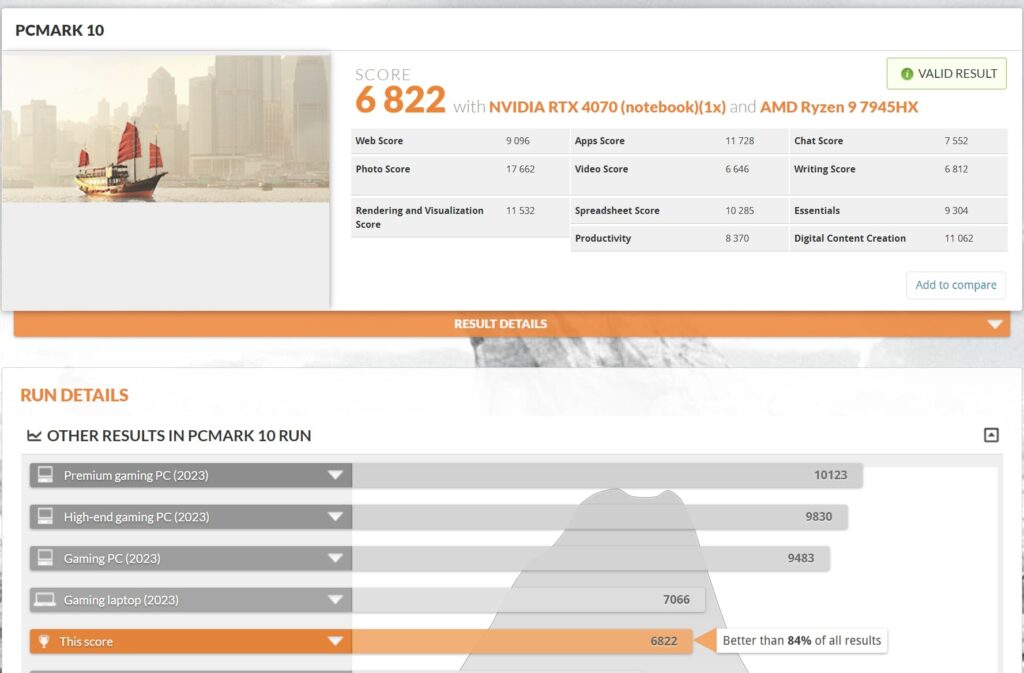
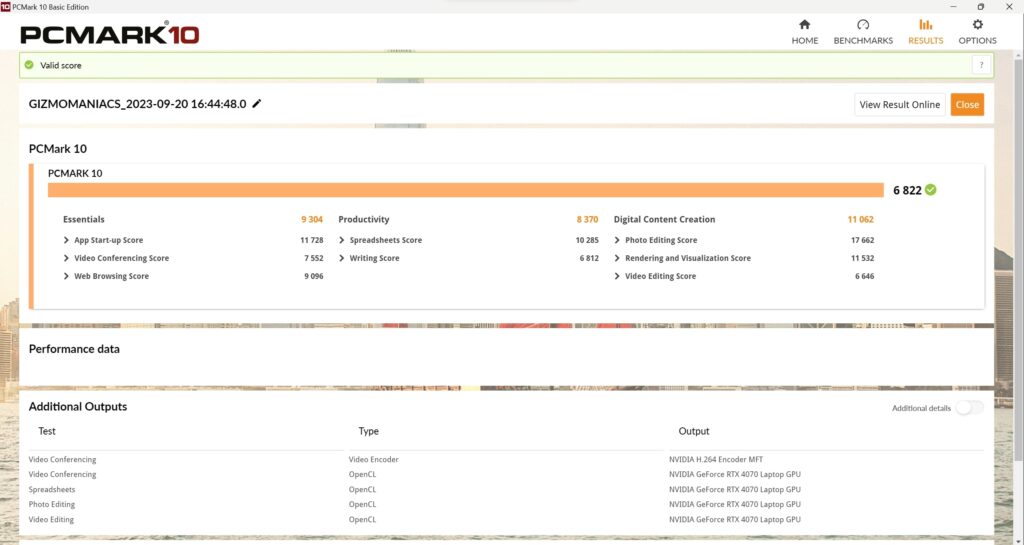
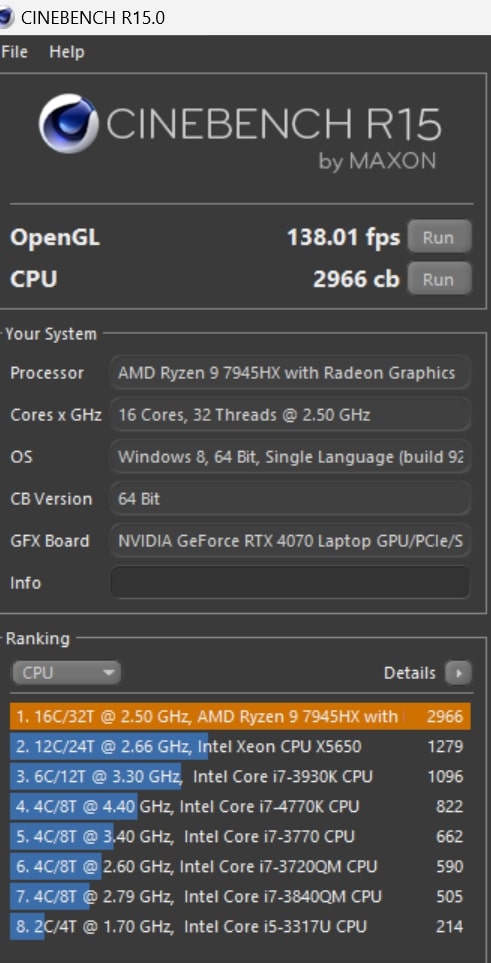
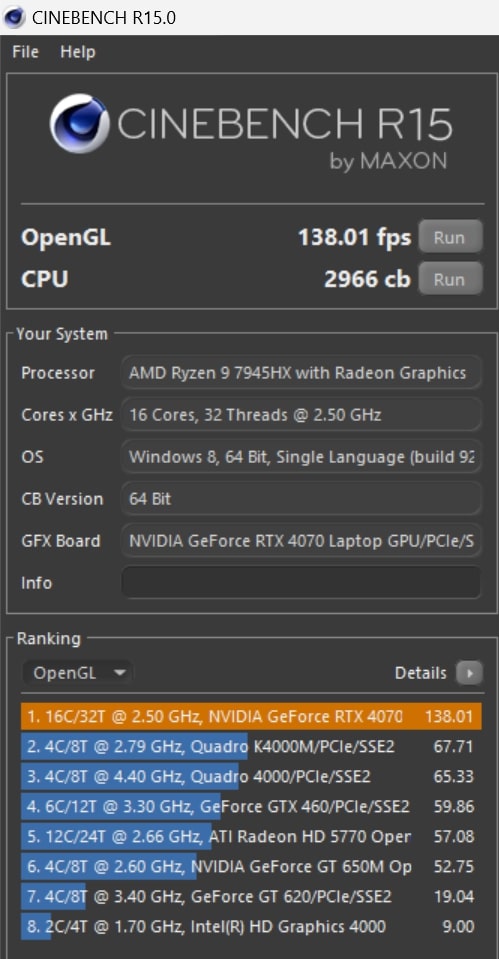
Noise, Heat, Connectivity, Speakers, and Others
Asus has incorporated a standard thermal module in this series, featuring dual fans, quad radiators, and an array of heat pipes covering all critical components. The CPU benefits from Conductonaut Extreme liquid metal compound, while the GPU utilizes regular paste, given the ample space in this large chassis.
Overall, this thermal setup suffices for this configuration, although the CPU tends to heat up during sustained multi-threaded loads and specific demanding games, pushing considerable power into the AMD platform. However, under typical usage scenarios, where the CPU does not demand excessive power, it operates at lower temperatures, whether the laptop is placed flat on a desk or on a raised stand to enhance airflow into the fans.
Chassis temperatures consistently remain within acceptable limits for the Strix G17 notebook. However, Performance mode does create a noticeable hotspot in the middle of the keyboard area, around the VB keys, reaching temperatures of 45+ degrees Celsius, which might be uncomfortable. Turbo mode, although effective, does generate more noise. It’s important to note that the recorded FLIR images were captured with the laptop on the desk; elevating it on a stand, particularly in Performance mode, leads to a significant reduction in internal temperatures.
Apart from gaming, this laptop operates quietly during light multitasking, browsing, or video streaming in everyday use. Even during idle periods, the noise levels are minimal. Occasionally, electronic noises are perceptible upon launching demanding applications, lasting only a few seconds as the fans ramp up. Otherwise, the laptop doesn’t exhibit persistent whining, buzzing, or creaking sounds.
Connectivity features Wireless 6E and Bluetooth 5, offering a triple-band implementation. Additionally, Gigabit wired Internet is available. The Wi-Fi chip, the same MediaTek module that performs effectively in Wi-Fi testing with a given setup.
In terms of audio quality, the laptop speakers, located at the bottom, deliver a commendable performance. Despite the presence of only two main speakers, the sound is rich with decent bass and reaches a volume of 80+ dB at head level. At high volume levels, distortions are notably absent, although the armrest does vibrate slightly when the volume exceeds 70%.
Lastly, a camera is positioned at the top of the screen, accompanied by microphones. However, the camera’s HD resolution limits its quality, especially in poor lighting conditions, and it lacks IR for Windows Hello functionality.
Battery Life
The battery life and charging capabilities of the Strix G17 are extensively reviewed, highlighting the 90Wh battery capacity and its performance during different usage scenarios. The automatic screen refresh rate adjustment and the impact on user experience are discussed. Detailed insights into power consumption during various activities, such as gaming and browsing, are provided, comparing the Strix G17’s efficiency with an Intel-based ROG model. The battery lasts for 4 hours and 45 minutes of Web browsing, or 3 hours and 30 minutes of video playback.
Gizmo Verdict
The Strix G17 stands as an enticing mid-tier laptop option, whether in the commanding RTX 4070 variant or the more budget-friendly RTX 4060 configuration. Both versions share identical design elements, features, hardware specifications, and screen quality.
However, we do have reservations about certain ergonomic aspects within this series and perceive the available configurations as somewhat imbalanced. The presence of a potent AMD Ryzen 9 7945HX processor alongside only mid-tier GPU options appears a good combo.
Our primary concern with this series revolves around its suboptimal efficiency when running on battery power—a surprising observation given AMD’s historical standing. The Dragon Range processor, with its double the cores and threads compared to previous AMD mobile platforms, surprisingly lacks efficiency in energy consumption. Considering this, a different Dragon Range Ryzen 7 processor or even an AMD Phoenix Core HS platform might have offered a more well-rounded solution for this versatile configuration.
Within this class, there are limited alternatives based on AMD. While Alienware plans to introduce AMD + RTX configurations for the m16/m18 models. If you have a keen interest in a full-size AMD notebook in 2023, I recommend to check this one.